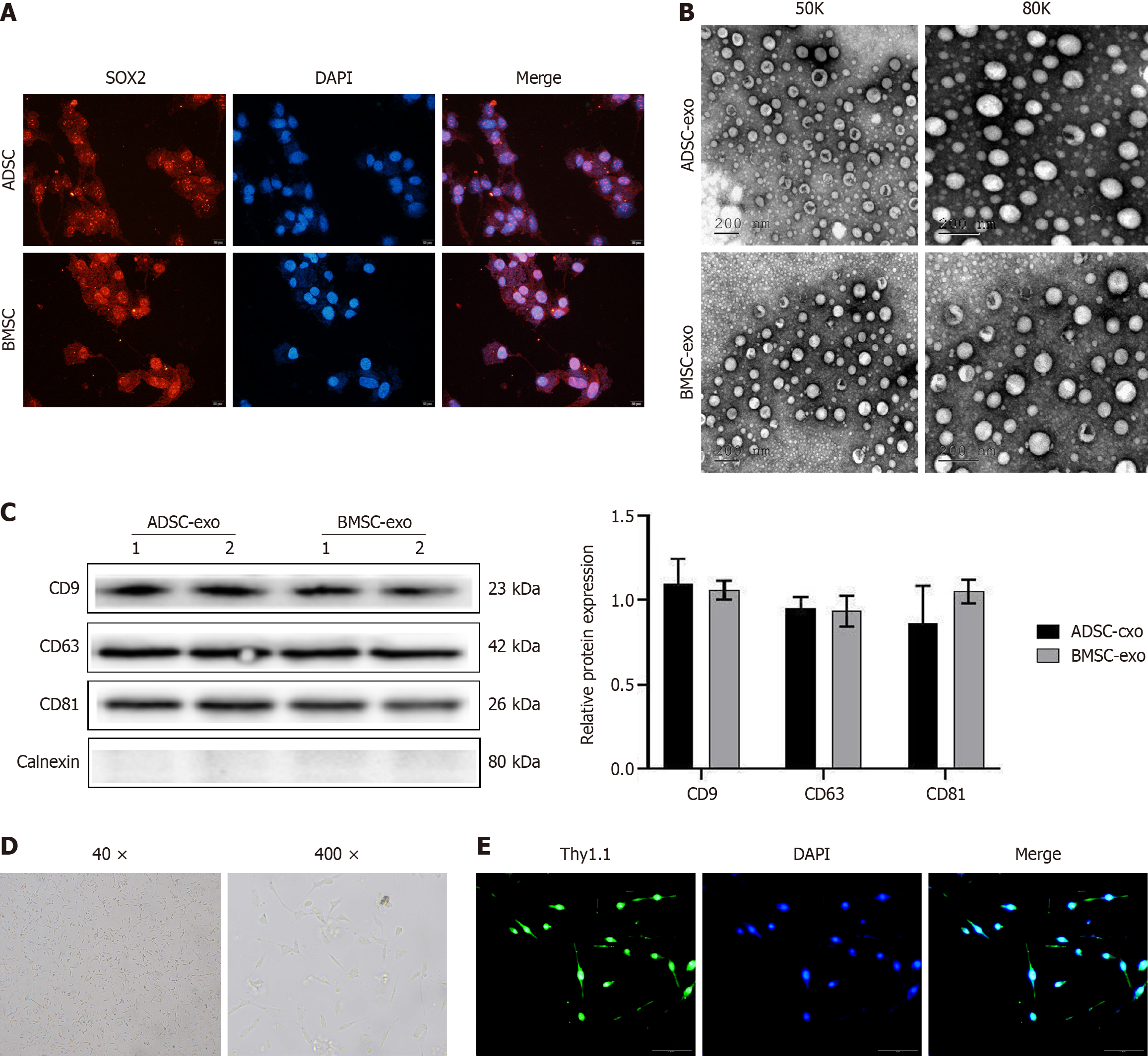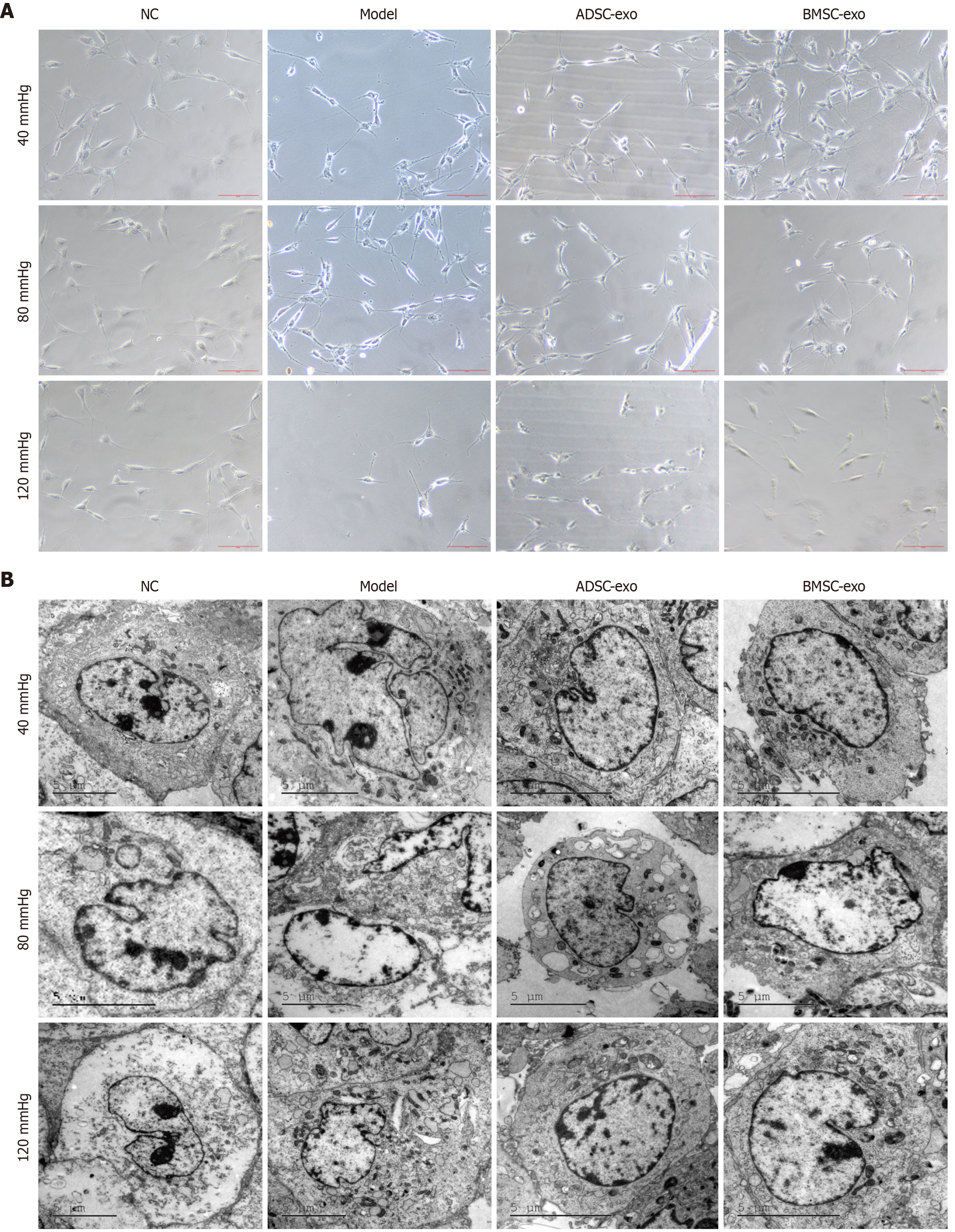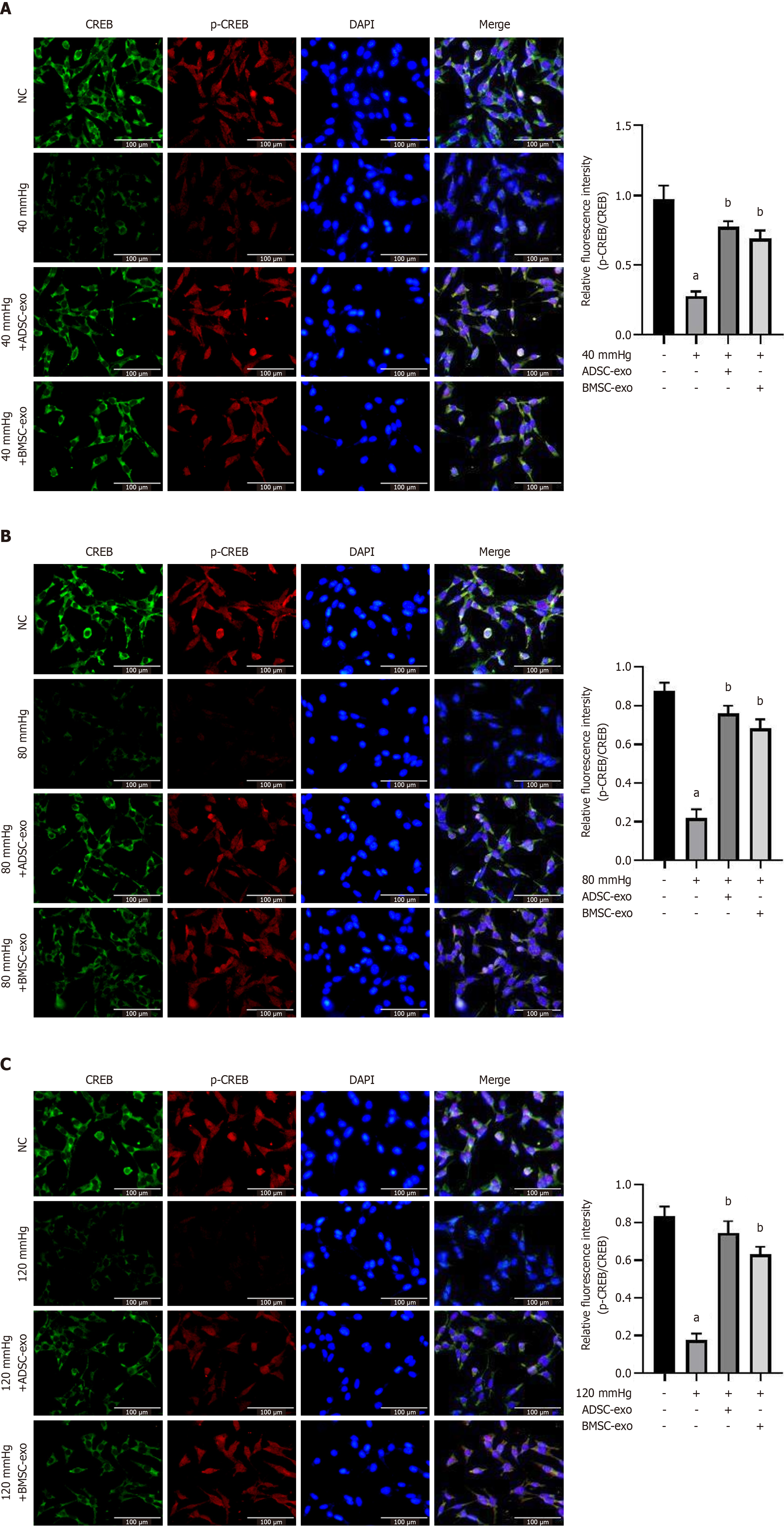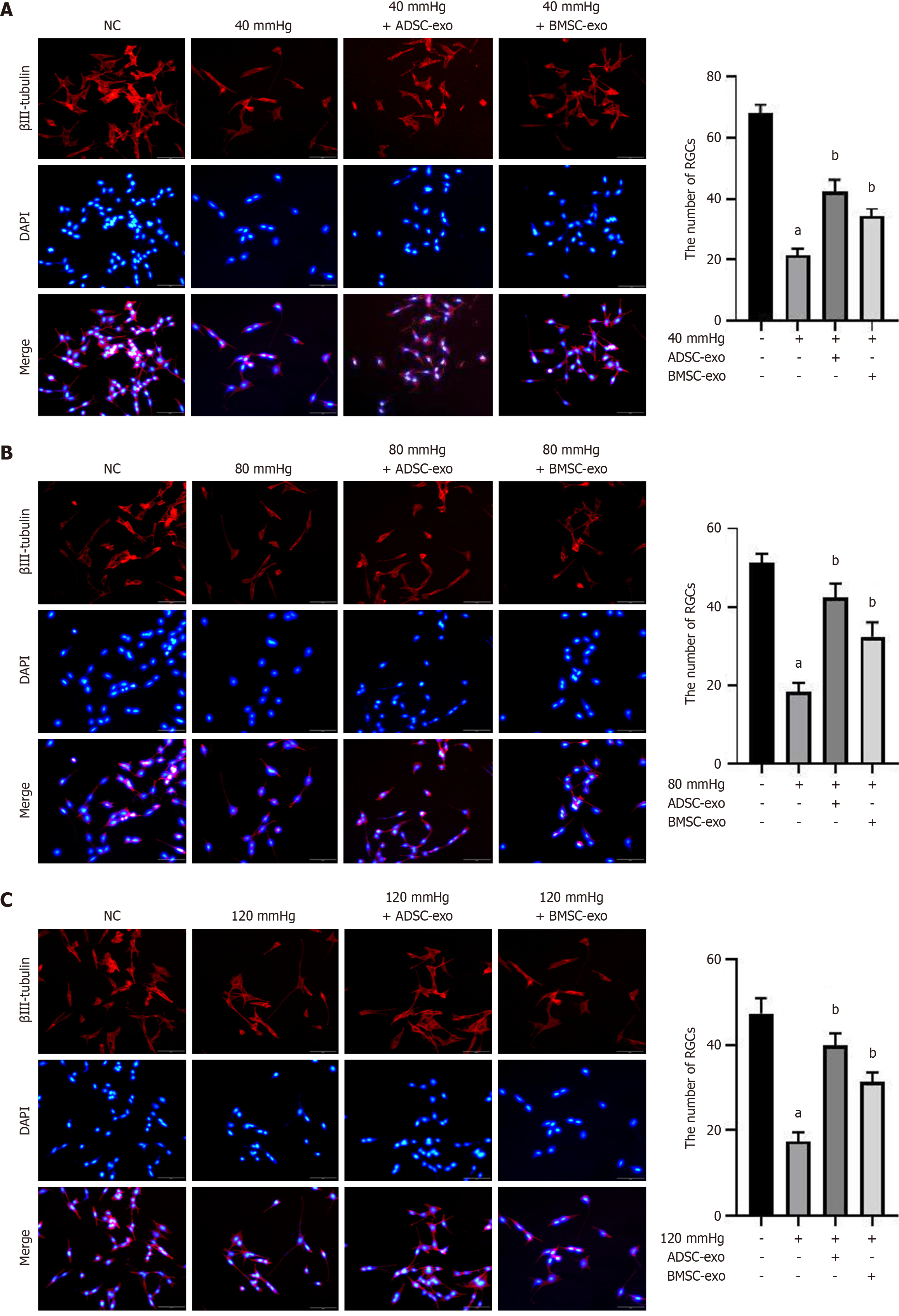Published online Oct 26, 2025. doi: 10.4252/wjsc.v17.i10.111792
Revised: July 22, 2025
Accepted: September 22, 2025
Published online: October 26, 2025
Processing time: 107 Days and 22.1 Hours
This is an erratum to the published paper titled “ADSC-Exos outperform BMSC-Exos in alleviating hydrostatic pressure-induced injury to retinal ganglion cells by upregulating nerve growth factors”. The original images had various issues including a limited field of view (Figure 1B), abnormal cell adhesion (Figure 2A), inadequate sample dehydration resulting in ice crystal artifacts (Figure 2B), excessive magnification causing localized signal saturation (Figure 3), and cellular overlap (Figure 5). This correction is being requested to ensure the accuracy of the information provided in this article.
Core Tip: This is a correction to “ADSC-Exos outperform BMSC-Exos in alleviating hydrostatic pressure-induced injury to retinal ganglion cells by upregulating nerve growth factors”. The initial images presented several technical limitations, including a restricted field of view (Figure 1B), irregular cell aggregation patterns (Figure 2A), suboptimal dehydration resulting in cryoartifacts (Figure 2B), oversaturation of localized signals due to excessive magnification (Figure 3), and cellular overlap (Figure 5). As the corresponding author, I am submitting corrected figures.
- Citation: Dai M. Correction to “ADSC-Exos outperform BMSC-Exos in alleviating hydrostatic pressure-induced injury to retinal ganglion cells by upregulating nerve growth factors”. World J Stem Cells 2025; 17(10): 111792
- URL: https://www.wjgnet.com/1948-0210/full/v17/i10/111792.htm
- DOI: https://dx.doi.org/10.4252/wjsc.v17.i10.111792
This is a correction to “Zheng ZK, Kong L, Dai M, Chen YD, Chen YH.
| 1. | Zheng ZK, Kong L, Dai M, Chen YD, Chen YH. ADSC-Exos outperform BMSC-Exos in alleviating hydrostatic pressure-induced injury to retinal ganglion cells by upregulating nerve growth factors. World J Stem Cells. 2023;15:1077-1092. [RCA] [PubMed] [DOI] [Full Text] [Full Text (PDF)] [Cited by in Crossref: 7] [Cited by in RCA: 8] [Article Influence: 4.0] [Reference Citation Analysis (0)] |
















